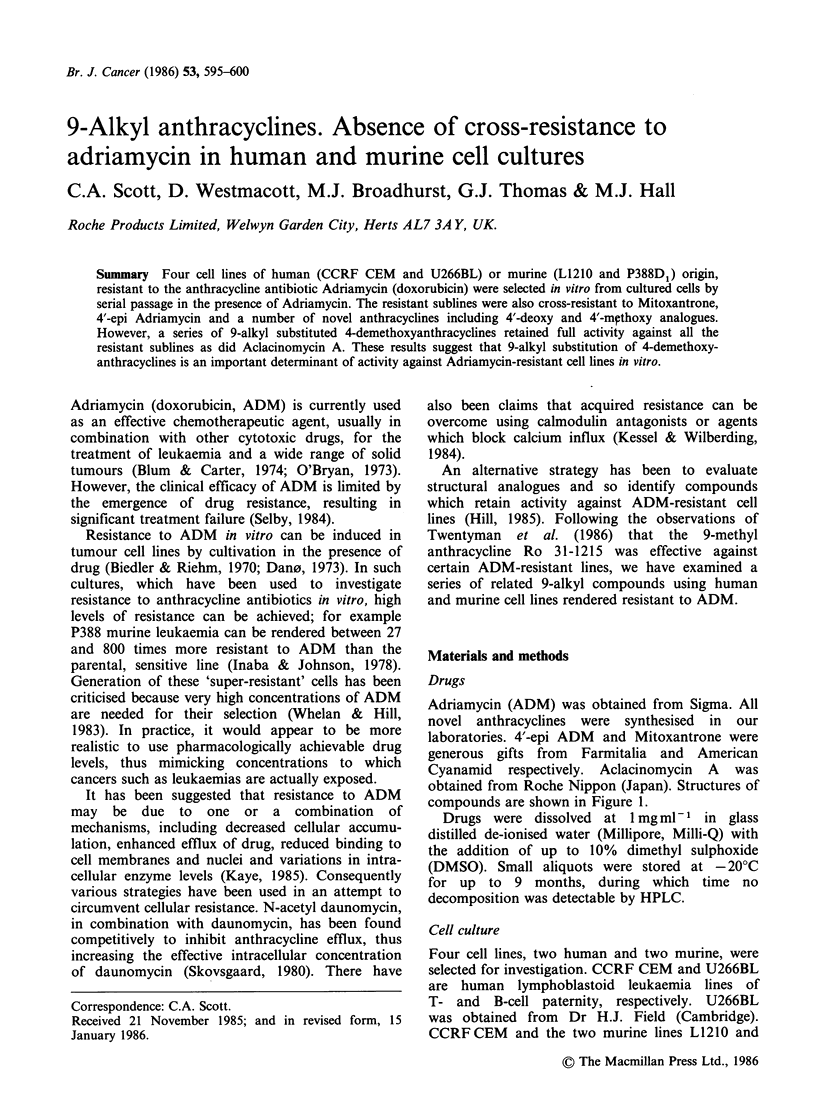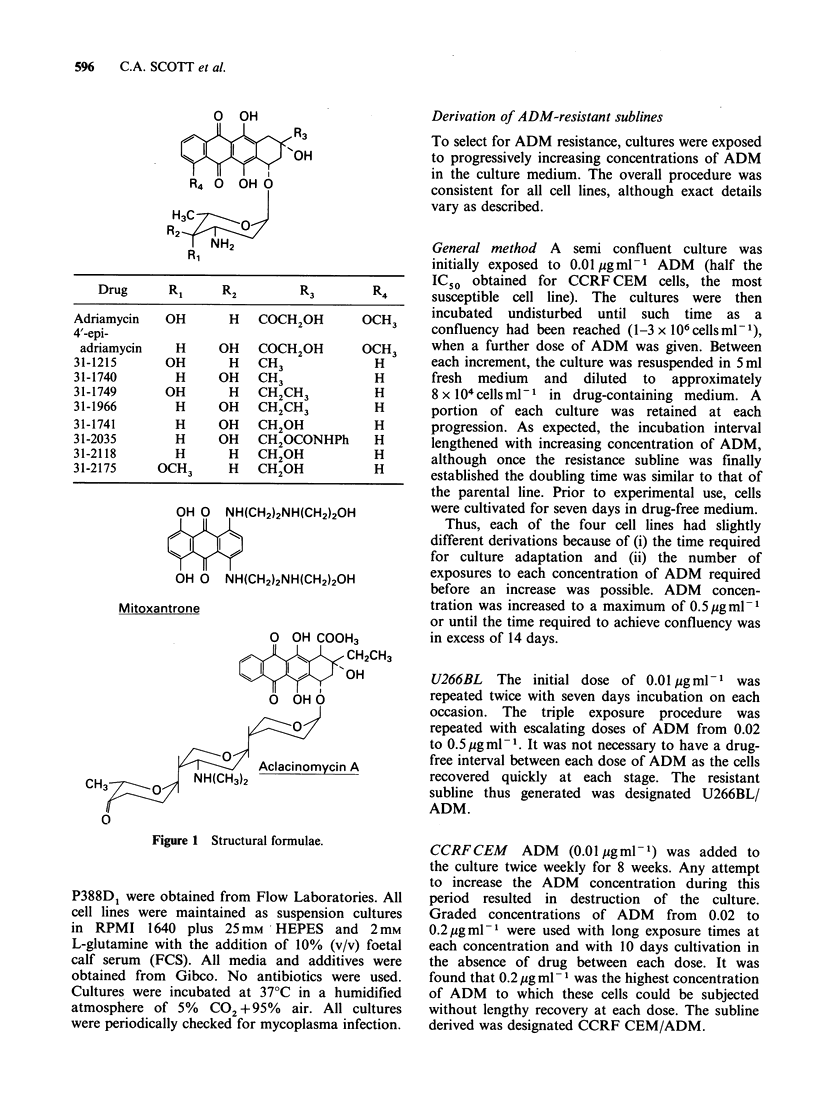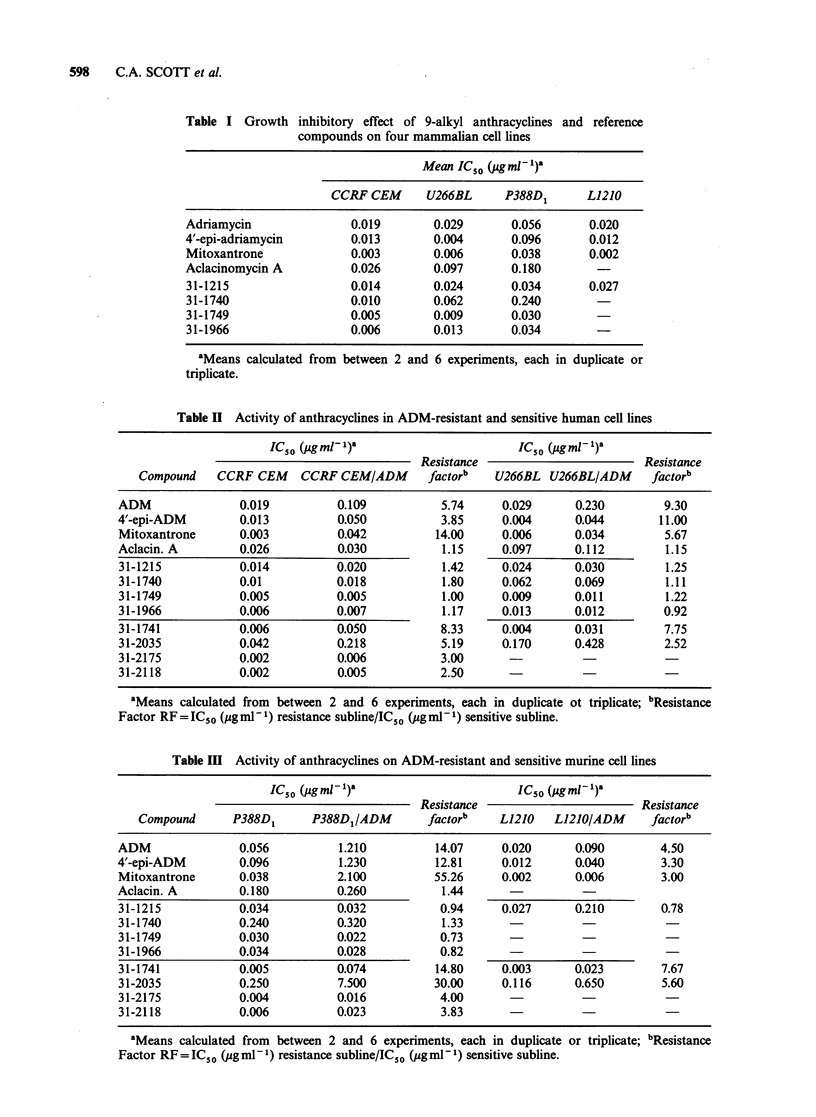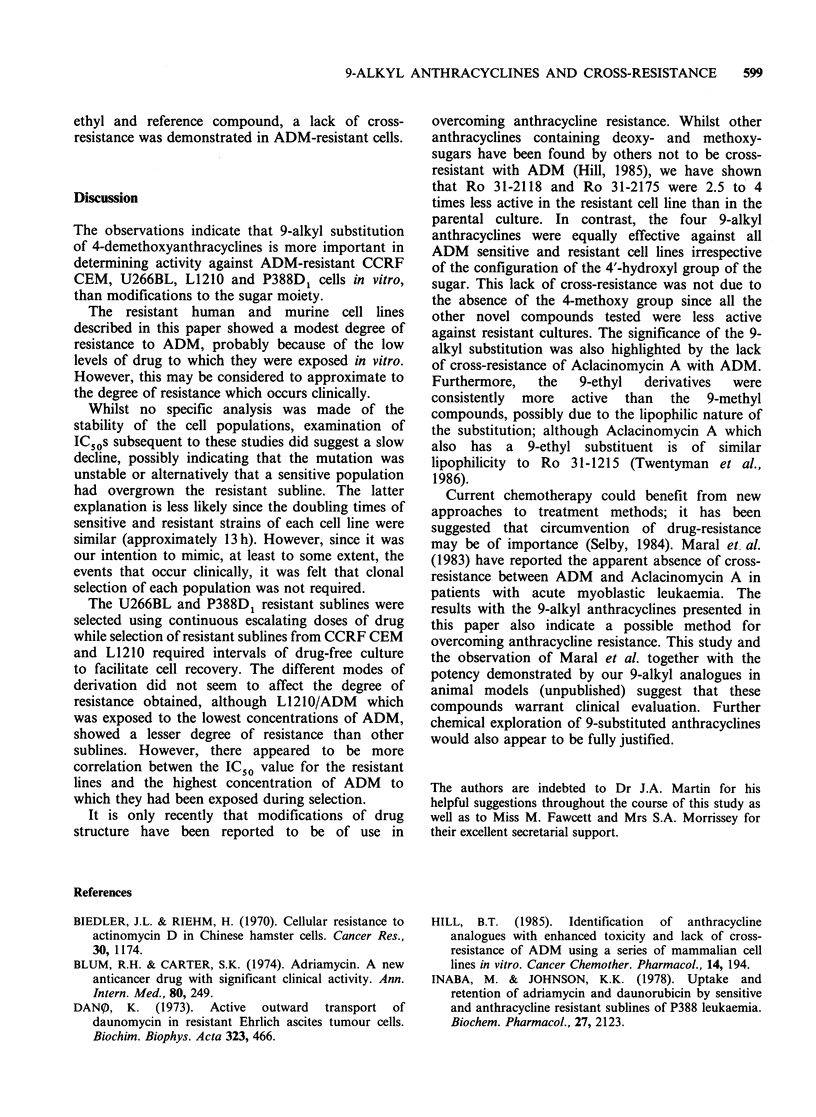Abstract
Four cell lines of human (CCRF CEM and U266BL) or murine (L1210 and P388D1) origin, resistant to the anthracycline antibiotic Adriamycin (doxorubicin) were selected in vitro from cultured cells by serial passage in the presence of Adriamycin. The resistant sublines were also cross-resistant to Mitoxantrone, 4'-epi Adriamycin and a number of novel anthracyclines including 4'-deoxy and 4'-methoxy analogues. However, a series of 9-alkyl substituted 4-demethoxyanthracyclines retained full activity against all the resistant sublines as did Aclacinomycin A. These results suggest that 9-alkyl substitution of 4-demethoxy-anthracyclines is an important determinant of activity against Adriamycin-resistant cell lines in vitro.
Full text
PDF





Selected References
These references are in PubMed. This may not be the complete list of references from this article.
- Biedler J. L., Riehm H. Cellular resistance to actinomycin D in Chinese hamster cells in vitro: cross-resistance, radioautographic, and cytogenetic studies. Cancer Res. 1970 Apr;30(4):1174–1184. [PubMed] [Google Scholar]
- Blum R. H., Carter S. K. Adriamycin. A new anticancer drug with significant clinical activity. Ann Intern Med. 1974 Feb;80(2):249–259. doi: 10.7326/0003-4819-80-2-249. [DOI] [PubMed] [Google Scholar]
- Dano K. Active outward transport of daunomycin in resistant Ehrlich ascites tumor cells. Biochim Biophys Acta. 1973 Oct 25;323(3):466–483. doi: 10.1016/0005-2736(73)90191-0. [DOI] [PubMed] [Google Scholar]
- Hill B. T., Dennis L. Y., Li X. T., Whelan R. D. Identification of anthracycline analogues with enhanced cytotoxicity and lack of cross-resistance to adriamycin using a series of mammalian cell lines in vitro. Cancer Chemother Pharmacol. 1985;14(3):194–201. doi: 10.1007/BF00258115. [DOI] [PubMed] [Google Scholar]
- Inaba M., Johnson R. K. Uptake and retention of adriamycin and daunorubicin by sensitive and anthracycline-resistant sublines of P388 leukemia. Biochem Pharmacol. 1978;27(17):2123–2130. doi: 10.1016/0006-2952(78)90284-8. [DOI] [PubMed] [Google Scholar]
- Kaye S., Merry S. Tumour cell resistance to anthracyclines--a review. Cancer Chemother Pharmacol. 1985;14(2):96–103. doi: 10.1007/BF00434344. [DOI] [PubMed] [Google Scholar]
- Kessel D., Wilberding C. Mode of action of calcium antagonists which alter anthracycline resistance. Biochem Pharmacol. 1984 Apr 1;33(7):1157–1160. doi: 10.1016/0006-2952(84)90533-1. [DOI] [PubMed] [Google Scholar]
- Selby P. Acquired resistance to cancer chemotherapy. Br Med J (Clin Res Ed) 1984 Apr 28;288(6426):1252–1253. doi: 10.1136/bmj.288.6426.1252. [DOI] [PMC free article] [PubMed] [Google Scholar]
- Skovsgaard T. Circumvention of resistance to daunorubicin by N-acetyldaunorubicin in Ehrlich ascites tumor. Cancer Res. 1980 Apr;40(4):1077–1083. [PubMed] [Google Scholar]


